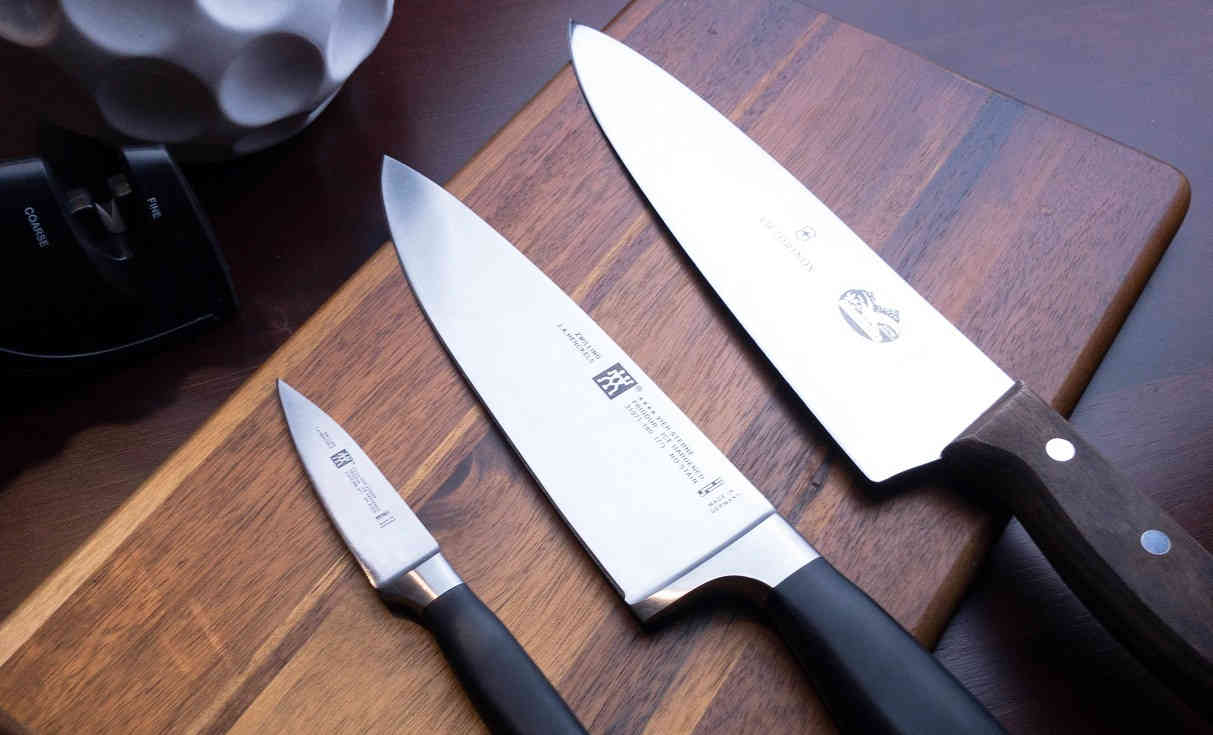
A commercial kitchen is a hive of activity where foods to be enjoyed by people from all walks of life are made. For efficient, skilful preparation it’s essential that everyone involved has access to the right equipment. Using equipment best suited to the task in hand can increase the efficiency of preparation methods and reduce food waste thus saving time and money in the process.
It is vital that all equipment used in your commercial kitchen is reliable enough to allow you to do your job properly and safely. Take the kind of knives you use for example. A knife is a core piece of equipment to have in a commercial kitchen. The majority of the food prepared in any catering operation will generally require the use of a knife of some kind.
Therefore, investing in a good set of knives becomes a necessity, one that you must satisfy if you want to run a successful kitchen.
Here is our pick of the top five types of knife you need in your commercial kitchen.
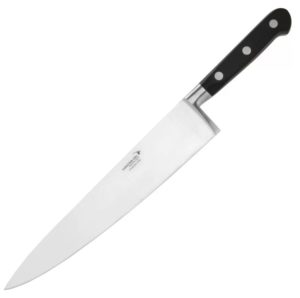
Chef’s knife
A chef’s knife is one of the most important tools of the trade for any respectable chef. With the right blade, the chef can comfortably create masterpieces that everyone can enjoy.
A standard chef’s knife blade is between 6-12 inches long and is used to perform different tasks such as slicing and chopping vegetables, slicing meat, mincing, and disjointing large cuts. It is also common to find a disparity between the western chef’s knife and the Japanese and Chinese chef’s knife, each designed for differing ingredients and for varying preparation processes.
There are also differences between some western knives. For example, the French knife has a straighter edge while the German chef’s knife curves at the tip. Chef’s knives with generally have either a forged blade or a stamped blade, the former being thicker and weightier, the latter being thinner and more flexible. This does not make any better than the other, however and will generally come down to the intended purpose and preference of the chef.
Read more about the different elements of a chef's knife and areas you need to consider when choosing the one best for you in 'The Complexities of a Chef's Knife'.
Paring knife
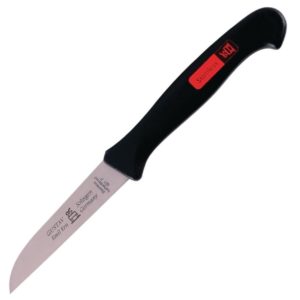
A paring knife is the smaller version of a chef’s knife. The only difference is that paring knives tend to be all-purpose. It is arguably one of the most important knives in a commercial kitchen given its wide range of uses.
The standard paring knife is 3-4 inches long and is especially versatile in a catering setting. It can be used for peeling and chopping vegetables however can also be used to deseed ingredients. The smaller size allows greater precision, ideal for in-hand work.
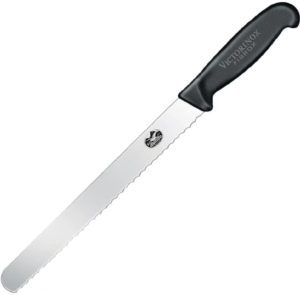
Serrated knife
A serrated kitchen utility knife is a knife with a tooth-like edge. It is used to cut food with a hard crust on the exterior but a soft core. You can use a serrated knife to cut through citrus fruits, delicate pastry like filo dough, breads and slice a layer cake.
It works like a saw hence allowing you to cut through foods like cake without ruining it or leaving too many crumbs.
Measuring approximately 10 inches, these knives can handle even the largest of portions in one stroke.
Carving knife
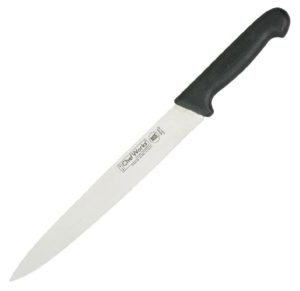
A carving knife is a specially made knife used to slice thin and uniform cuts of meat such as roasts, hams, poultry, and other large cooked meats. It can also be used to fillet large fish.
The knife will usually have a thinner blade than the chef’s knife to provide less resistance when cutting.
You may see scallops on modern carving knives. These are large shallow dimples along the side of the knife which also help reduce resistance when cutting. A carving knife typically measures approximately 8-14 inches long.
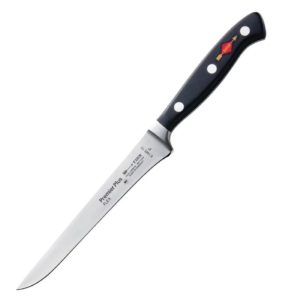
Boning knife
Boning and filleting knives are ideal for removing bones from cuts of meat or fish. The blade is usually thin and flexible to allow you to make holes and deep cuts as you work. Flexible boning knives are usually used for poultry, fish and other tender foods while more rigid alternatives are ideal for beef and pork.
Flexibility in a boning knife is often seen as an important feature as it allows you to follow the contours of the product you are working on for a cleaner cut and less waste. Boning knives will typically measure 5-6 inches in length however can be longer.
Specialist Knives
If your kitchen serves other cuisines, you may find that a specialist knife set is better suited to the types of preparation that you carry out. These will feature alternatives knives such as cleavers and santoku knives.
Colour Coding your Knives
Some brands offer colour coded knives, each knife having a different coloured
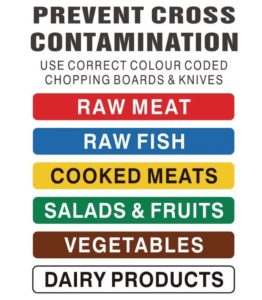
- Red - Raw Meat
- Blue – Raw Fish
- Yellow – Cooked Meats
- Green – Salads and Fruits
- Brown - Vegetables
- White – Bakery and Dairy
To complete your food prep area colour coded chopping boards are also available.
Maintenance of your Kitchen Knives
As with anything in a commercial kitchen, you will need to maintain your knives to ensure that they work effectively. Good maintenance also helps you work safely and avoid unnecessary injuries. There are a number of things you can use to maintain the quality of your knives.
There are a range of resources available for the proper maintenance of your knives. For example, using bags for storage of chef’s essentials tools can prevent knives from rusting and also reduce any possible accidents during transportation of equipment or when not in use. Sharpening tools are also ideal in keeping your knife well sharpened and therefore easier to control.
There are two types of sharpening tools available to maintain the precision edge expected at a professional level. Electric sharpening tools use electricity to sharpen your knife and can be quick and convenient. These pull-through models however, are often unsuitable for use with every type of knife. Handheld sharpening tools such as whetstones allow you to draw the knife along the sharpening stones for a manual approach that gives more control. While this can be a more time-consuming task and can take a bit of practice to get used to, it is versatile and can be used with the majority of knife types making it a popular choice with chefs.
